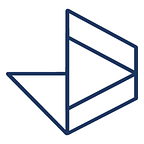Community spotlight: Reconstructing the past with 3D printing
“It’s like putting together a puzzle.” That’s how Alexei Vranich describes his work on an archaeology project that’s using a technology usually associated with the future — 3D printing — to make sense of the past.
Centered on the ruins of Pumapunku, a temple that dates to 500–1000 AD and stood in the Tiwanaku site in what is now Bolivia, the project uses digital fabrication technology to help put together the puzzle of the temple’s original design and construction. Having assembled photographs, field notes, and other resources from the archaeological dig site at Pumapunku, the project team used this ecosystem of records to create 3D models of a large number of architectural fragments. Acting as physical “puzzle pieces,” the 3D-printed models have allowed students and researchers to investigate the connections between the structure’s fragments and to test possible reconstructions in a newly tactile way. While the project began at UCLA, it is now moving to Berkeley with Vranich, who is eager to participate in interdisciplinary communities like the Jacobs Institute and to collaborate with others discovering new applications of digital fabrication technologies.
Creating models of Pumapunku’s architectural fragments involved bringing together disparate information sources, research methods, and technical tools. In setting out to make accurate digital models of the discovered ruins, the team drew from a base of data that included a series of accurate measurements of the temple’s fragments. Other resources included field notes and photographs from roughly 150 years of archaeological work at the site, along with recent information Vranich and others had collected themselves at Tiwanaku.
From there, they worked with 3D modeling software to translate this data into visual models of each fragment. With these models providing digital “instructions” for printing, the team then fabricated physical models using a powder-bed 3D printer, which builds up objects by selectively applying binding material. This yielded a large collection of fragments, produced at a size (4% of actual size) that enabled the team to easily hold pieces in their hands.
This new element was a breakthrough. Unlike large architectural pieces — or notes or models on a computer screen — 3D-printed pieces can be manipulated quickly and intuitively. This allowed the researchers to try combinations and seek connections rapidly, turning over pieces and placing them together as they sought to reconstruct the temple’s layout. The physicality of the pieces provided new information in itself. Vranich explains, “You’re getting all types of information from your hands [as you handle something] — weight, feel, even the grooves and angles as the corners and sides press into the sensitive tips of your fingers.”
This tactile engagement, along with the ability to quickly try out combinations of the 3D-printed “puzzle pieces,” led to fresh insights. Sometimes, Vranich says, these insights were sudden, rooted in the same intuition that guides any puzzle-solver. “When we reconstructed the location of the architecture along a single building, we physically got on our hands and knees and looked in. We then realized that the location of the gateways were set one behind the other to create an ‘infinity mirror’ effect,” he explains, highlighting one moment of insight made possible by 3D printing (the top photo on this page provides a glimpse of this effect). “The idea that we were potentially looking into the way that an ancient people conceptualized the infinite cosmos and ritual space sent chills down our spines.”
